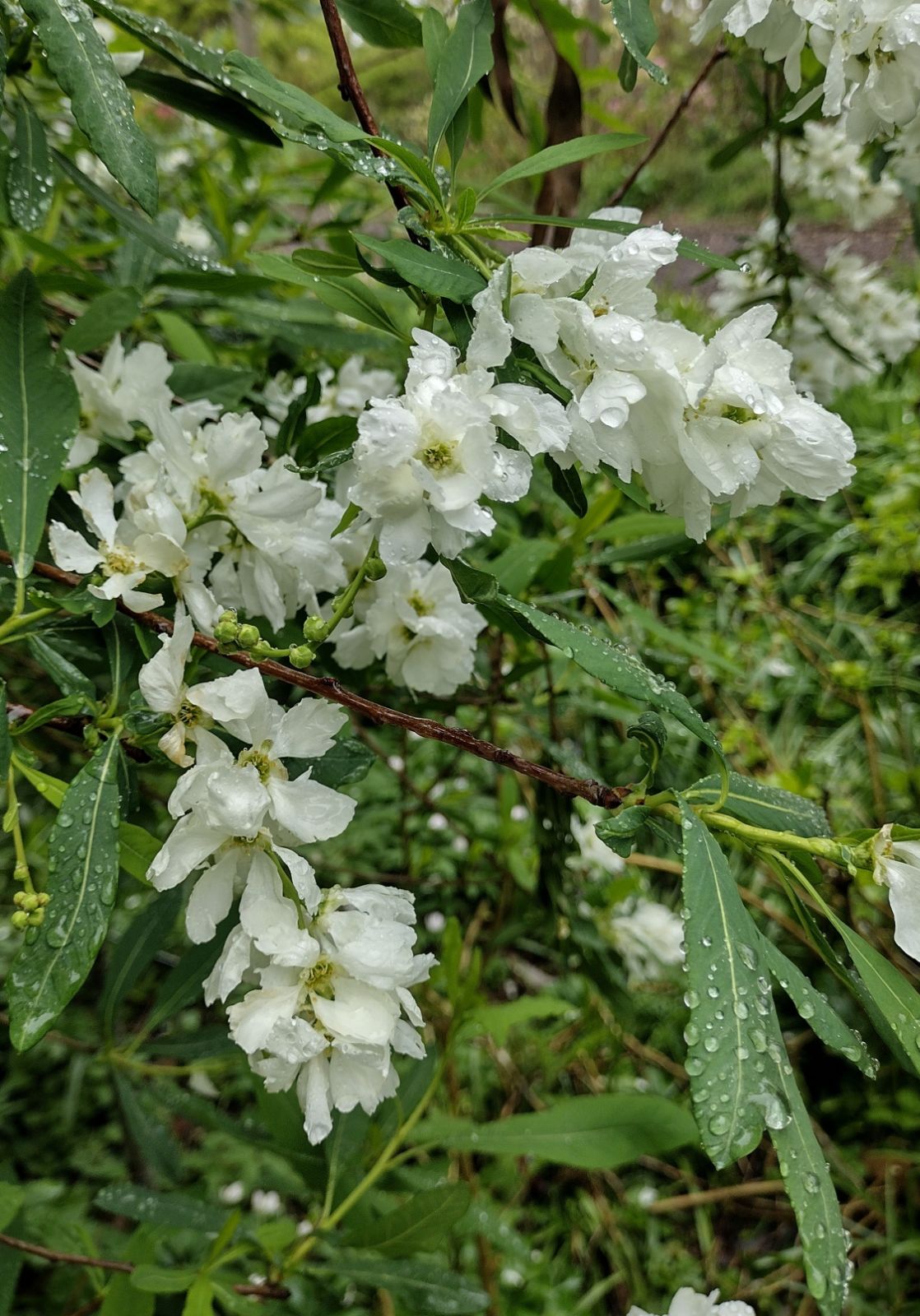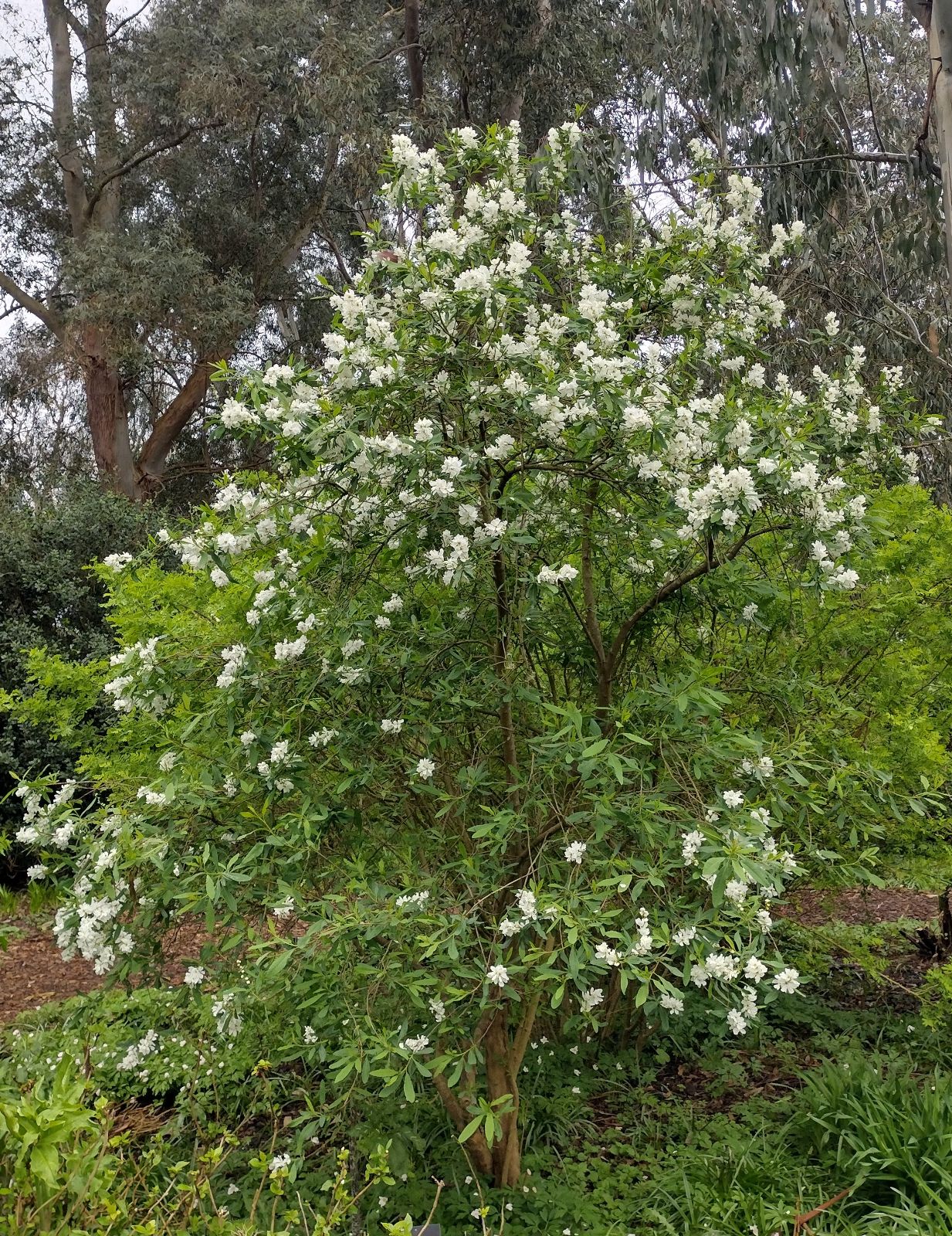Exochorda korolkowii
Credits
Article from Bean's Trees and Shrubs Hardy in the British Isles
Recommended citation
'Exochorda korolkowii' from the website Trees and Shrubs Online (treesandshrubsonline.
Genus
Synonyms
- E. albertii Reg.
A deciduous shrub of sturdy, erect habit up to 12 or 15 ft high, with erect branches; branchlets glabrous. Leaves obovate, glabrous, those of the sterile shoots 11⁄2 to 31⁄2 in. long, 3⁄4 to 11⁄2 in. wide, toothed towards the apex, which is pointed, the base tapering to a short stalk, occasionally with two deep, narrow lobes there; leaves of the flowering twigs much smaller, 1⁄2 to 3⁄4 in. wide, not toothed. Flowers pure white, about 11⁄2 in. across, in erect racemes 3 to 4 in. long; stamens in five groups of five each. Fruit composed of five flattened, two-edged divisions, each 1⁄2 to 3⁄4 in. long, arranged starwise. Flowers in May.
Native of Turkestan, where it was discovered in the eastern part of Bokhara by Albert Regel, at altitudes of 4,000 to 6,000 ft. It is very hardy, and more robust in habit than E. racemosa, from which it differs in the greater number of stamens, in the smaller flowers, and larger fruits. The plant became generally known in cultivation in 1886 through Prof. Regel of St Petersburg, but it had previously been grown as E. korolkowii at the Segrez Arboretum in France by Lavallée, who sent it to Kew in 1881 under that name.


